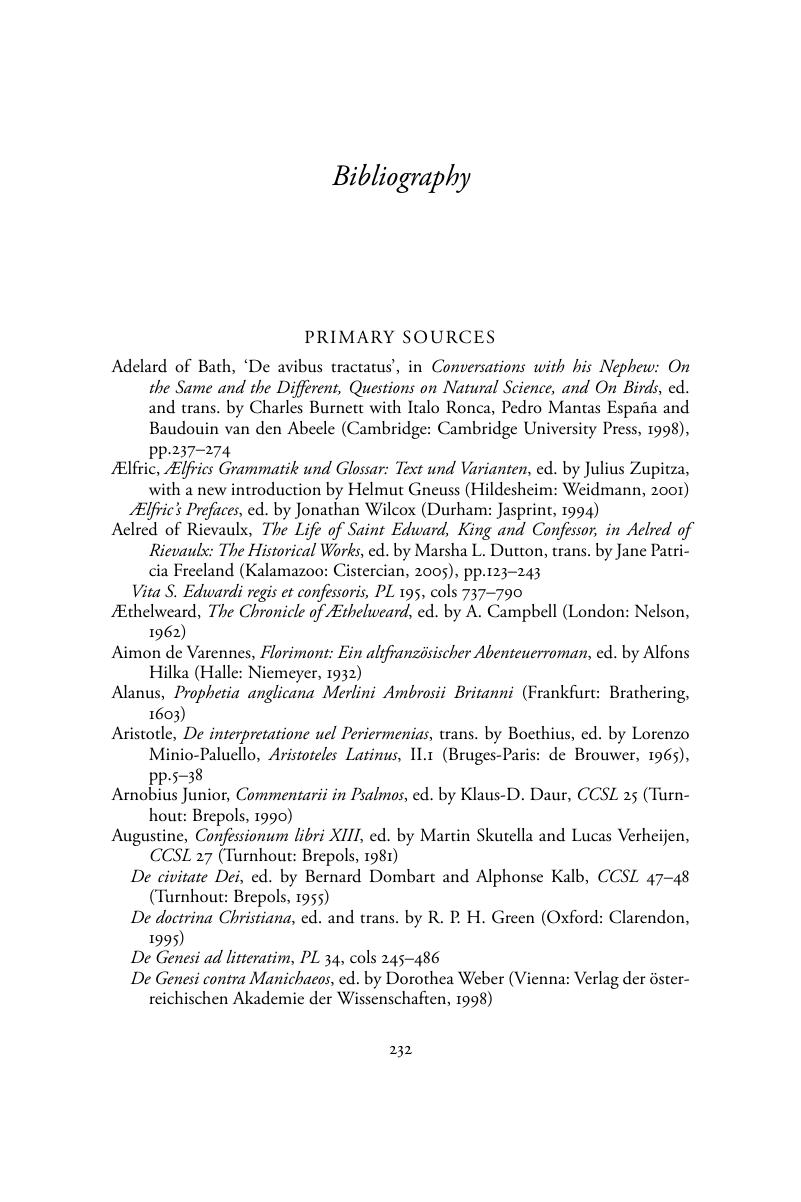Book contents
- The Linguistic Past in Twelfth-Century Britain
- Cambridge Studies in Medieval Literature
- The Linguistic Past in Twelfth-Century Britain
- Copyright page
- Contents
- Figures
- Acknowledgements
- Abbreviations
- Introduction
- Chapter 1 Methods and Motivations for Studying the Vernacular Linguistic Past
- Chapter 2 Perceptions of English Linguistic and Literary Continuity
- Chapter 3 Explorations and Appropriations of British Linguistic History
- Chapter 4 The Vernaculars of Ancestral Law
- Chapter 5 Placing French in Multilingual Britain
- Conclusion
- Notes
- Bibliography
- Index
- Cambridge Studies in Medieval Literature
- References
Bibliography
Published online by Cambridge University Press: 29 September 2017
- The Linguistic Past in Twelfth-Century Britain
- Cambridge Studies in Medieval Literature
- The Linguistic Past in Twelfth-Century Britain
- Copyright page
- Contents
- Figures
- Acknowledgements
- Abbreviations
- Introduction
- Chapter 1 Methods and Motivations for Studying the Vernacular Linguistic Past
- Chapter 2 Perceptions of English Linguistic and Literary Continuity
- Chapter 3 Explorations and Appropriations of British Linguistic History
- Chapter 4 The Vernaculars of Ancestral Law
- Chapter 5 Placing French in Multilingual Britain
- Conclusion
- Notes
- Bibliography
- Index
- Cambridge Studies in Medieval Literature
- References
Summary

- Type
- Chapter
- Information
- The Linguistic Past in Twelfth-Century Britain , pp. 180 - 231Publisher: Cambridge University PressPrint publication year: 2017



